Paris Fashion: Myth and la Mode
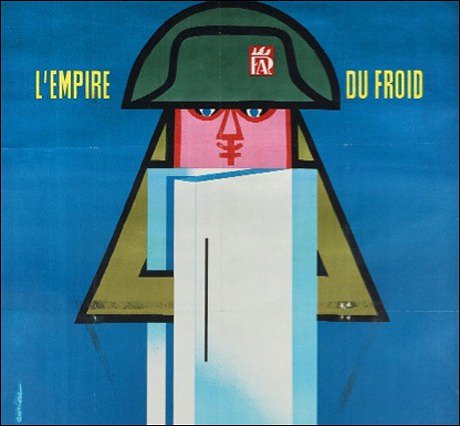
Thu 21 Mar 2013
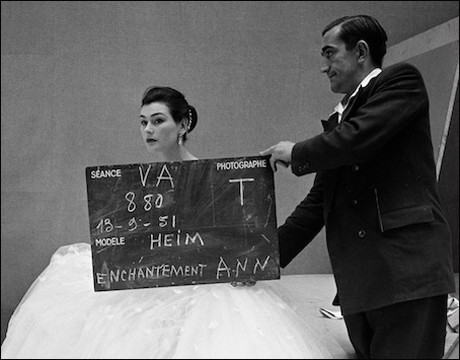
Henry Clarke, Musée Galliera (Heim couture collection).
At that time, a mannequin was a wickerwork dummy, used to showcase ready-to-wear for female shoppers. Within two decades, that task was given to real women. Before long, these “models” were synonymous with Paris fashion. “Without the model,” says Sylvie Lécallier of the Musée Galliera, “there would never be fashion as we know it today.” That universe of style is the subject of her museum’s new show, “Model: The Body of Fashion,” which runs at les Docks until May 19.
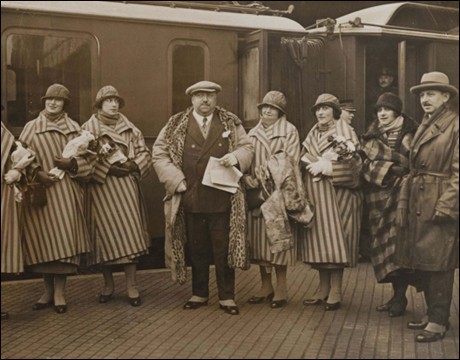
Anonymous, Musée Galliera (Paul Poiret and models).
Lécallier put her exhibition together last summer, for Arles’s annual Rencontres photography festival. It proved so popular the museum brought it to the capital. Any Paris fashion follower will enjoy its photographs, from names such as Guy Bourdin, Nick Knight, Irving Penn, Juergen Teller and Helmut Newton. Their studies of fashion’s most stunning handmaidens are augmented by magazines, movie clips and videos. (Included is the famous, kinetic Alexander McQueen collection made in homage to the film They Shoot Horses, Don’t They?)
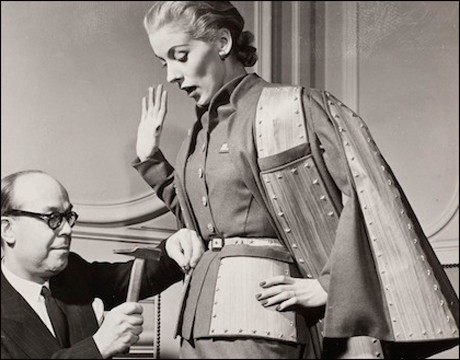
Interfoto, Musée Galliera (Raphael in Venice, 1951).
Some of the most fascinating photos date from the 19th century—a few from as far back as 1875. These give us a peek at fashion’s earliest show-women, who included opera stars, actresses and designers’ wives. We also see those fetching girls who staffed the first couture houses, parading elegant robes among the eager customers. An added treat is seeing designs by early Paris legends, names from Doucet and Paquin to Robert Piguet.
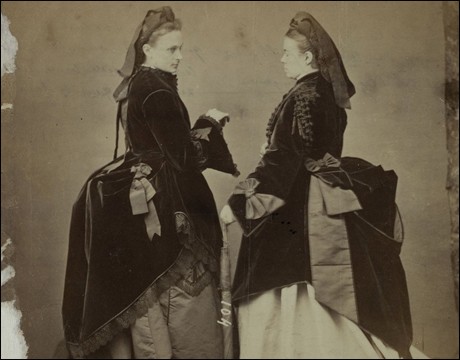
Unknown, Musée Galliera (La Revue de Mode models, 1857).
“The client,” says Madame Lécallier, “felt at home in a couture house. She—or he—could touch the fabric or the skin of a mannequin. But this sent a message that the women themselves were on display and perhaps even on sale.” So, as a profession, the modeling trade was thought disreputable. Very slowly, as the 20th century dawned, it gained legitimacy. In 1924, designer Jean Patou professionalized it . . . by importing tall, thin American models.
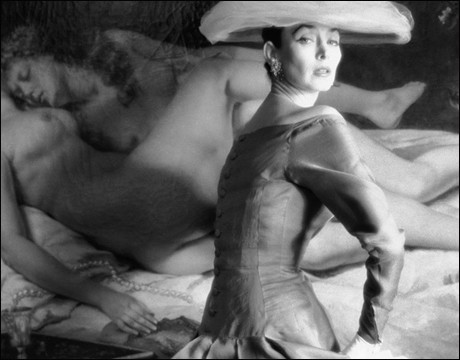
Henry Clarke, Musée Galliera (Heim dress, model Dorian Leigh, 1955).
The show faithfully traces the evolution of change: the ultrafeminine ’40s and ’50s, the swinging ’60s and its “Youthquake,” the supermodels of the ’80s and “grunge chic” of the ’90s. Included are more than 150 photos and clips. Here is a 15-year-old Kate Moss at the beach in cutoffs, there Paul Poiret surrounded by models in his striped ’20s coats. There are cosmetics and even Barbie dolls named after the cover girls.
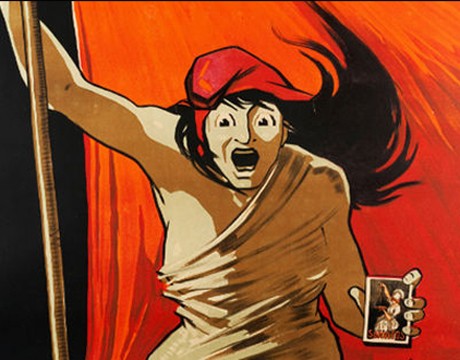
Poster, “French History Retold by Publicity,” Bibliothèque Forney.
The Bibliothèque Forney holds Paris’s biggest graphic art collection: posters, postcards, wallpaper, textiles and lots of publicity. The Forney is housed in the famous Hôtel de Sens, the oldest private mansion in the Marais. (Begun in 1475, it was last remodeled around 1911.) Ingenious exhibitions rotate all the Forney’s special holdings and its current “French History as Related by Advertising” is a highly amusing show that will run through April 27.
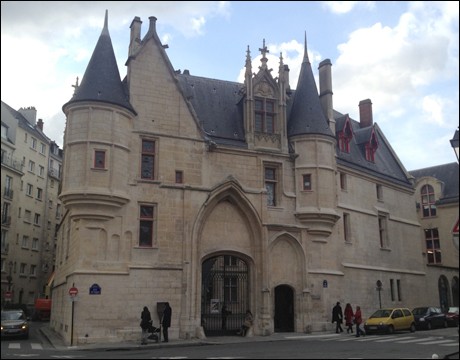
Hôtel de Sens/Bibliothèque Forney, Steve Sampson.
French designers are world famous for their grasp of graphics. Here, from 1900 to now, is the evidence why. Whether flacking for Perrier, Camembert or cod liver oil, all the posters on display here are unified by one characteristic. Each of them stars a hero or heroine of French history. Thus Joan of Arc waves her flag for the Eurostar, Marie-Antoinette continues to espouse eating cake and Napoleon uses a Dictaphone for his battle plans. For my money, the most amusing figure is Louis XIV—who appears in numerous guises. Best? He deserts the court and Versailles for his favorite aperitif.
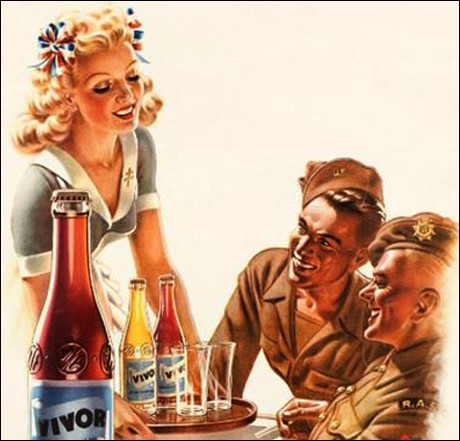
Poster, “French History Retold by Publicity,” Bibliothèque Forney.
Curator Claudine Chevrel is delighted her show is a hit. “We think of society today as very permissive,” she says. “Yet little of the art here would actually be allowed today.” She gestures to the wall behind where, in a poster from 1917, a blond baby shares his cigarette break with two soldiers.
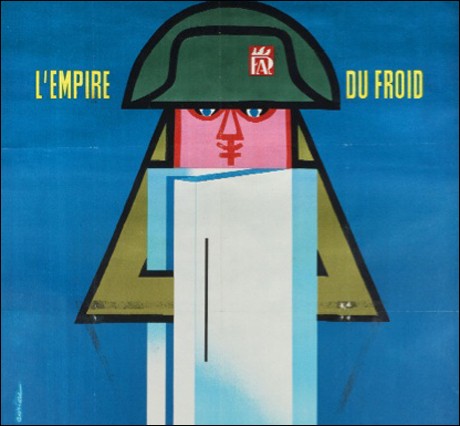
Poster, “French History Retold by Publicity,” Bibliothèque Forney.
In addition to their wit and graphic moxie, many of the best are also on sale as postcards. So are other gems from the Forney’s collection: beautiful toiles de Jouy patterns, fashion plates and vintage posters. Both these shows are colorful and stylish and, at 6 euros per entry, each is also a great value.
Related Links
Musée Galliera
“Model: The Body of Fashion” (“Mannequin, le corps de la mode”)
Les Docks
Bibliothèque Forney
Hôtel de Sens
“French History as Related by Advertising” (“L’histoire de France racontée par la publicité”)
Editor’s note: Join our daily chats and enjoy our Francophile girls’ club on the GG2P Facebook page.